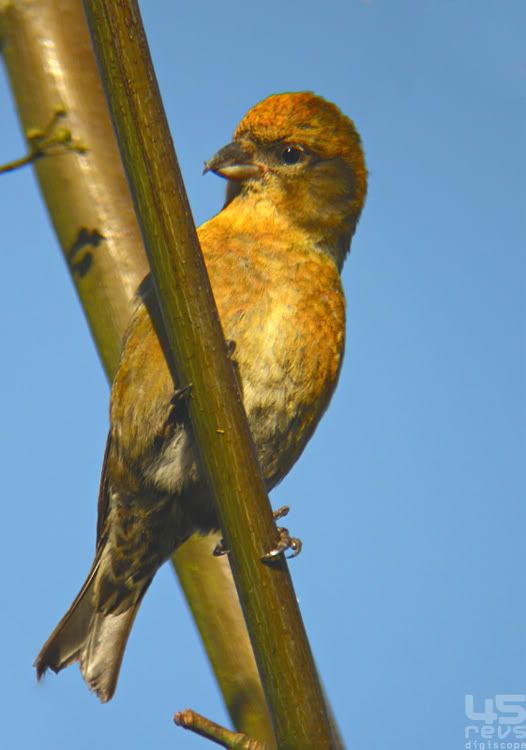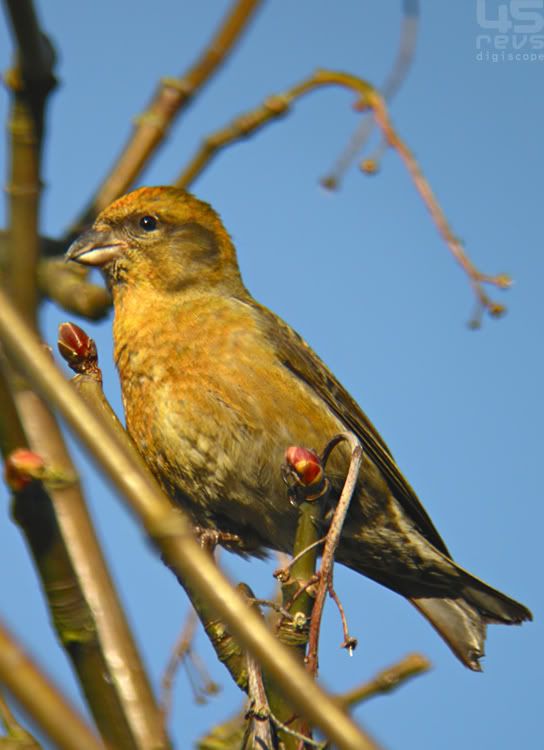Maplewood has turned out to be a phenomenal place to see them as a flock of them has been hanging around frequently since last year, chattering away and flying from tree to tree as they do so well.
I have been lucky to get shots of them on numerous occasions now but i think yesterdays session with this beauty below is the best so far.
seriously, everything was perfect; the lighting, blue skies, perch and the fact that we were alone without interruption for as long as i needed added up to a fun time.
this bird was quite curious and would fly out from it's perch sometimes and flutter in mid-air, looking at me before flying back.
i was set-up quite close on the bridge and every now and then it would land on the railing, before flying back.
yesterday i put the 30X eyepiece back on the scope and maybe it was a good thing because the "quality" (grain, softness etc.) of these shots is about as good as i'm likely to get digiscoping with the P5100 / ED82 scope setup i have now.
i can live with these.


Interesting facts about crossbills i recently read about in the great little book Flights of Fancy - Birds in Myth, Legend and Superstition (Peter Tate)
In Thuringia Germany they were sometimes kept as caged birds and were called the Christbird or winter bird.
Supposedly it was a treasured commodity who was able to obey it's master's commands and watch over their children.
It's most desirable attribute however was it's ability to attract human maladies to itself, away from the owner.
"If it's bill bent to the left, it would transfer colds and rheumatism from men; if the bill curved to the right then it would cure the same complaints in women. A further medicinal property ascribed to the bird was that the water left in it's drinking bowl was a certain remedy for epilepsy".
It was also thought in Central Europe that if you kept one in your home it would never burn down or be struck by lightning.
thus it was also known as the firebird.
Religiously, it is thought that the crossbills beak was originally straight but became twisted when it attempted to pry the nails from the wooden cross Jesus was crucified on.
it's red plummage is also thought to symbolize his blood.

No comments:
Post a Comment